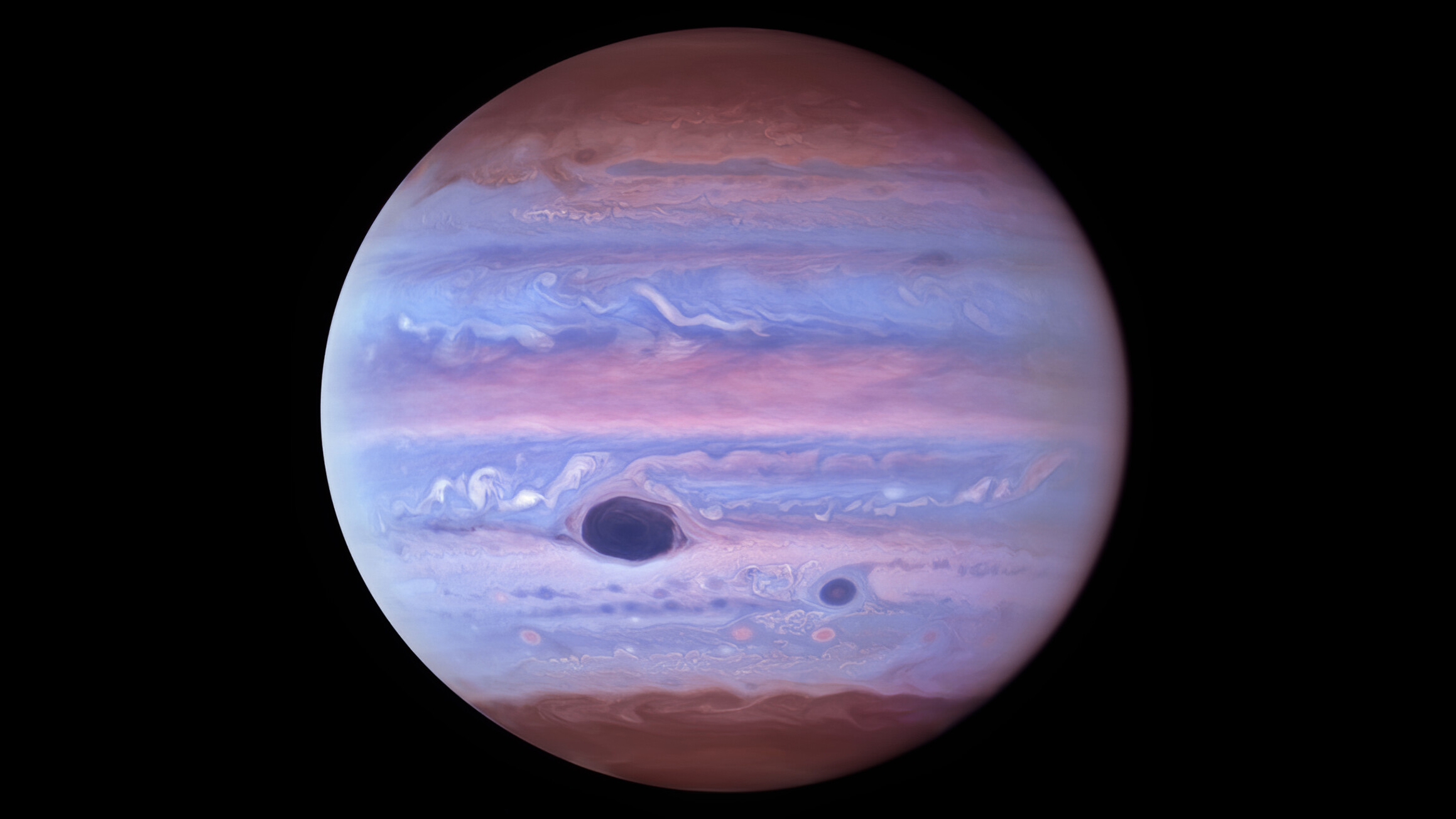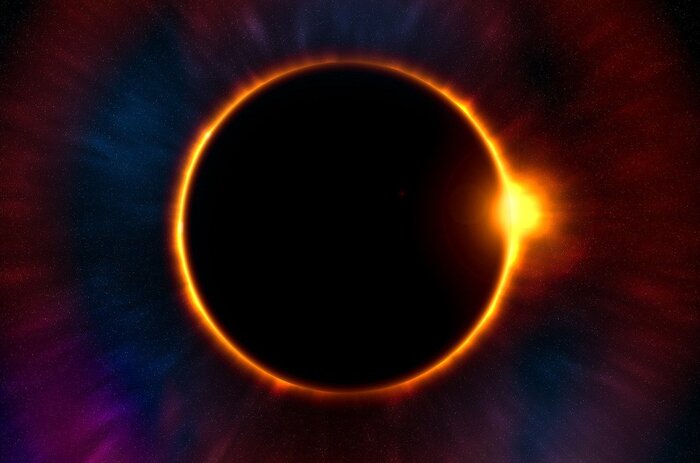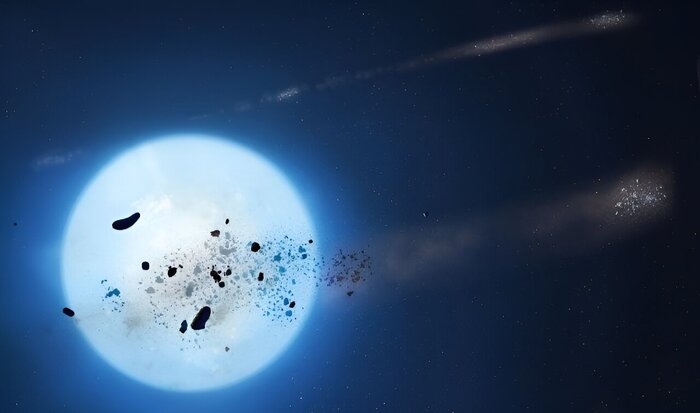Look at the new features they picked up from Jupiter 0:48
(CNN) -
Images from two different telescopes show Jupiter, the largest planet in our solar system, in a new light.
The Gemini North Telescope in Hawaii and the Hubble Space Telescope captured Jupiter in visible, infrared, and ultraviolet light, revealing the gas giant's striking atmospheric features in striking detail.
These include super storms, massive cyclones, and of course the Great Red Spot, a centuries-long storm in Jupiter's atmosphere so large it could engulf Earth.
This is multi-wavelength astronomy in action.
Observing a planet through different wavelengths of light can uncover aspects and features that would otherwise be invisible.
Their comparison allows a better understanding of the gas giant, its atmosphere, its particles and its haze.
"The Gemini North observations were made possible by the telescope's location within the Maunakea Scientific Reserve, located near the top of Maunakea," said Mike Wong, observing team leader and planetary scientist at the University of California, Berkeley. , it's a statement.
"We are grateful for the privilege of observing Ka'āwela (Jupiter) from a unique place both for its astronomical quality and for its cultural significance."
Watch a giant planet form 0:52
Gemini North's Near-InfraRed Imager provided the infrared wavelength image of Jupiter, while Hubble did double duty using its Wide Field Camera 3 to image in visible and ultraviolet light.
All three images were taken at the same time on January 11, 2017 for comparison.
advertising
In all three images, Jupiter looks totally different.
The Great Red Spot almost disappears in infrared wavelengths, but a dark region within the storm appears larger than in the visible light image.
This is because the different wavelengths of the light show varied structures within the storm.
Combining the visible light images of the storm obtained by Hubble with the infrared observations from Gemini revealed that the dark features are holes in the cloud layer.
In visible light, these appear dark.
But in thermal infrared, the researchers were able to observe that Jupiter's heat escapes into space through the holes.
Normally, this process is blocked by the huge clouds of Jupiter.
See the comparison between the bright infrared image of Jupiter against the much softer visible light image in the slider below.
Credit: AURA / NSF / NOIRLAB / ESA / NASA / GEMINI INTERNATIONAL OBSERVATORY
In the infrared, the warm layers of Jupiter below the clouds appear to shine through the gaps in the clouds.
Wong compared the infrared image of Jupiter to a pumpkin lantern that he adorns himself with on Halloween.
Meanwhile, the planet's famous cloud bands are visible at all three wavelengths.
Red Spot Jr., called Oval BA by scientists, is a storm located below the Great Red Spot that appears in visible and ultraviolet images.
It was formed from the merger of three storms in 2000.
What differences do you notice in the ultraviolet and visible light image?
La Mancha Roja Jr. has been fading to white in recent years.
This is the original color of the spot before it turned red in 2006. But the core of this storm is dark red, which could suggest that the Jr. Red Spot will turn redder again in the future, like the Great Red Spot.
Above this turbulent region in the visible image, there is also a superstorm that looks like a swirling white streak.
Another is visible in the northern hemisphere of Jupiter in the infrared image.
This particular streak is believed to be a cyclonic vortex, or series of vortices, stretching nearly 45,000 miles from east to west.
In visible light, it appears dark brown.
When NASA's Voyager 1 spacecraft imaged Jupiter in 1979, scientists called these features "brown barges."
In ultraviolet light, these vortices almost disappear.
Below them, there are large hot spots visible in the infrared image.
Stormy jupiter
Combined, the three different perspectives help scientists understand Jupiter's intriguing clouds in the layers of its atmosphere.
The images can also be compared to observations made by the Juno mission, which has been orbiting Jupiter since 2016.
This planet is known for its huge storms, but trying to peer inside requires the teamwork of the Juno spacecraft, Hubble, and Gemini North.
The collective observations of this dream team have produced impressive images and revealed what happens inside Jupiter's gigantic and continuous storms.
NASA's shocking photo of Jupiter shows storms and winds on the giant planet
Jupiter's storms are monstrous.
Its storm clouds can extend 40 miles from base to top, which is five times the height of storm clouds on Earth.
Jupiter's lightning bolts are also very powerful, since they triple the energy of the so-called "super rays", the most powerful on Earth.
Wong and his team have used this aggregated data to understand how thunderstorms form on Jupiter, to explore holes in the Great Red Spot's clouds, and to look at the deeper layers of the planet's atmosphere that are not normally seen.
"Juno detected a lot of lightning bolts at radio wavelengths that are associated with cyclones," Wong said.
«And we interpret the data to show that when there is active convection, which is what generates the lightning, this particular situation occurs in which there are three types of clouds mixed in the same place: the really tall convective towers, the clearings in the that Gemini detects bright emission and deep-sea clouds. '
Lightning is likely to occur in deep water clouds, caused by humid convection.
Jupiter's lightning bolts and large storms form in and around large convective cells located above deep clouds.
NASA reveals the origin of auroras on Jupiter 0:41
Although multiple robotic space missions have visited Jupiter, researchers still have many questions about how this gas giant formed and the processes that occur on the planet.
The support from Hubble and Gemini during the Juno mission also offers researchers a window into Jupiter's climate in general, such as wind patterns, atmospheric waves, and cyclones, as well as its gases and heat.
This dataset is also the basis for future research that Wong is working on to determine how and why the Great Red Spot appears to be shrinking.
Although scientists don't know why, this reduction in the size of the storm has been happening since astronomers began observing it and recording measurements as early as 1930.
The gas giant has a constantly moving atmosphere, so long-term observation allows us to follow the changes in Jupiter over time.
Scientists are eager to learn what surprises Jupiter has in store for the future.
Jupiter







